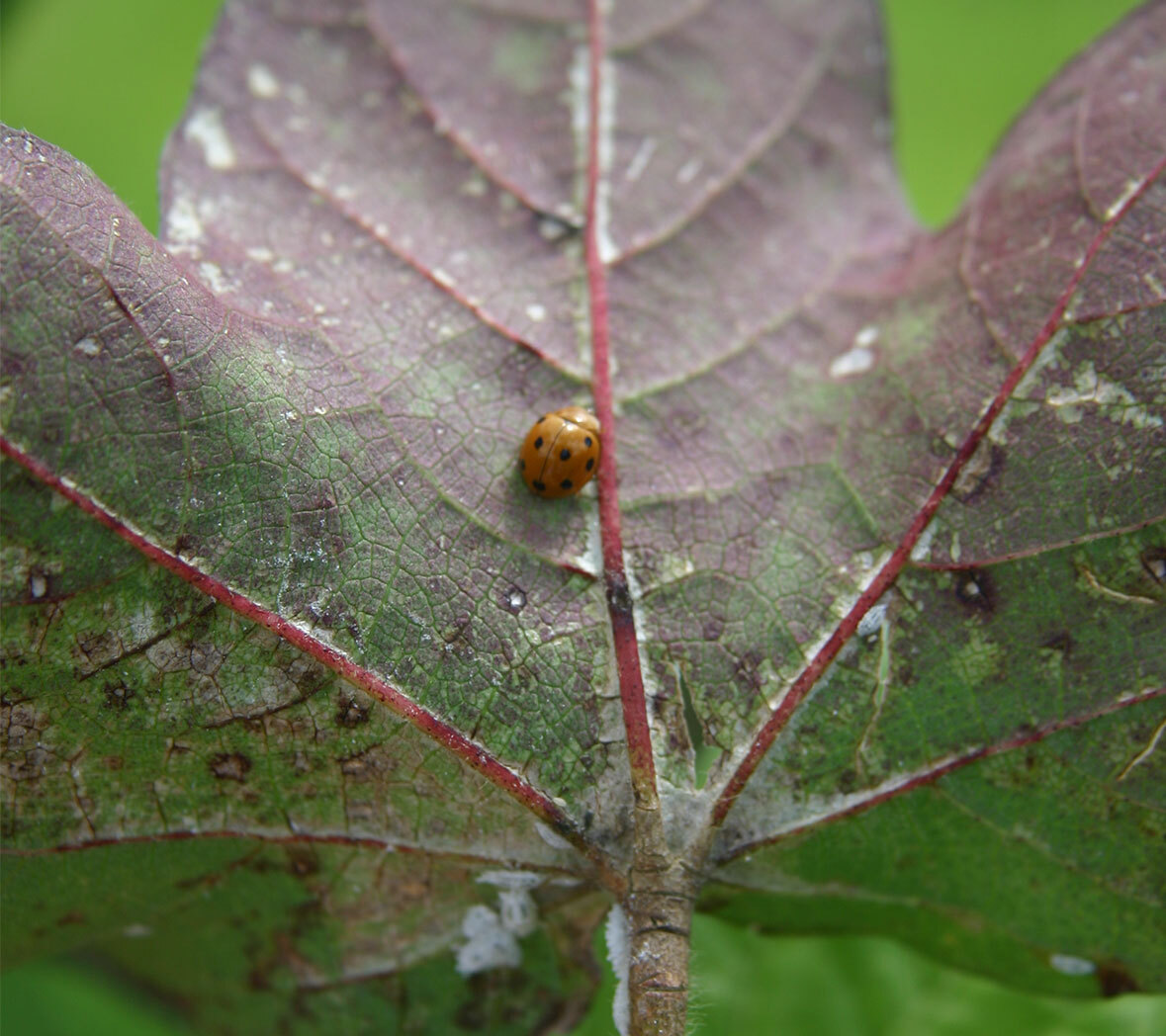Crop protection
- The Australian cotton industry works hard to protect itself from pest incursions and disease.
- The industry has reduced its use of synthetic insecticides by 97% since 1992 thanks to Integrated Pest Management (IPM) techniques.
- The biggest risk to effective IPM is resistance to synthetic insecticides, or to the proteins contained in genetically modified cotton.
Major pests
Cotton crops in Australia can be attacked by a wide range of pests, the major ones being:
- Helicoverpa armigera (cotton bollworm)
- Helicoverpa punctigera (native budworm)
- Creontiades dilutus (green mirid)
- Aphis gossypii (cotton aphid)
- Tetranychus urticae (two-spotted spider mite)
- Bemisia tabaci B- Biotype (silverleaf whitefly)
Historically, control of these pests largely relied on the use of synthetic insecticides. Over-reliance on synthetic insecticides creates problems such as insecticide resistance, disruption of natural pest enemies, secondary pest outbreaks and environmental consequences.

Integrated Pest Management
The introduction of genetically modified cotton in 1996 and the implementation of Integrated Pest Management (IPM) enabled the cotton industry to reduce its use of synthetic insecticides by 97% since 1992.
IPM involves using all means of managing pest populations with the aim of reducing insecticide use while maintaining profitability, yield and fibre quality. IPM is a whole-year approach to managing pests. IPM also involves crop monitoring to know what pests and beneficial insects are present in the crop. Conservation of beneficial insects is an important part of IPM that helps reduce the need for pesticide sprays. In the event pest control is needed, cotton growers now have access to ‘selective’ insecticides, which only affect the target pests and help conserve beneficial insects in the crop.
The biggest risk to effective IPM in the Australian cotton industry is resistance, either to synthetic insecticides or to the proteins contained in genetically modified cotton. To manage this risk, the cotton industry has implemented two stewardship programs with the aim of preventing resistance.
The Insecticide Resistance Management Strategy (IRMS) manages the risk of insecticide resistance in the major cotton pests. It is a voluntary strategy developed by scientists and growers and is reviewed annually.
The Bollgard 3® Resistance Management Plan (RMP) has been developed in conjunction with regulators, the technology providers, scientists and growers to help delay the development of resistance to genetically modified cotton. The RMP is a mandatory component of growing genetically modified cotton and is reviewed annually.
